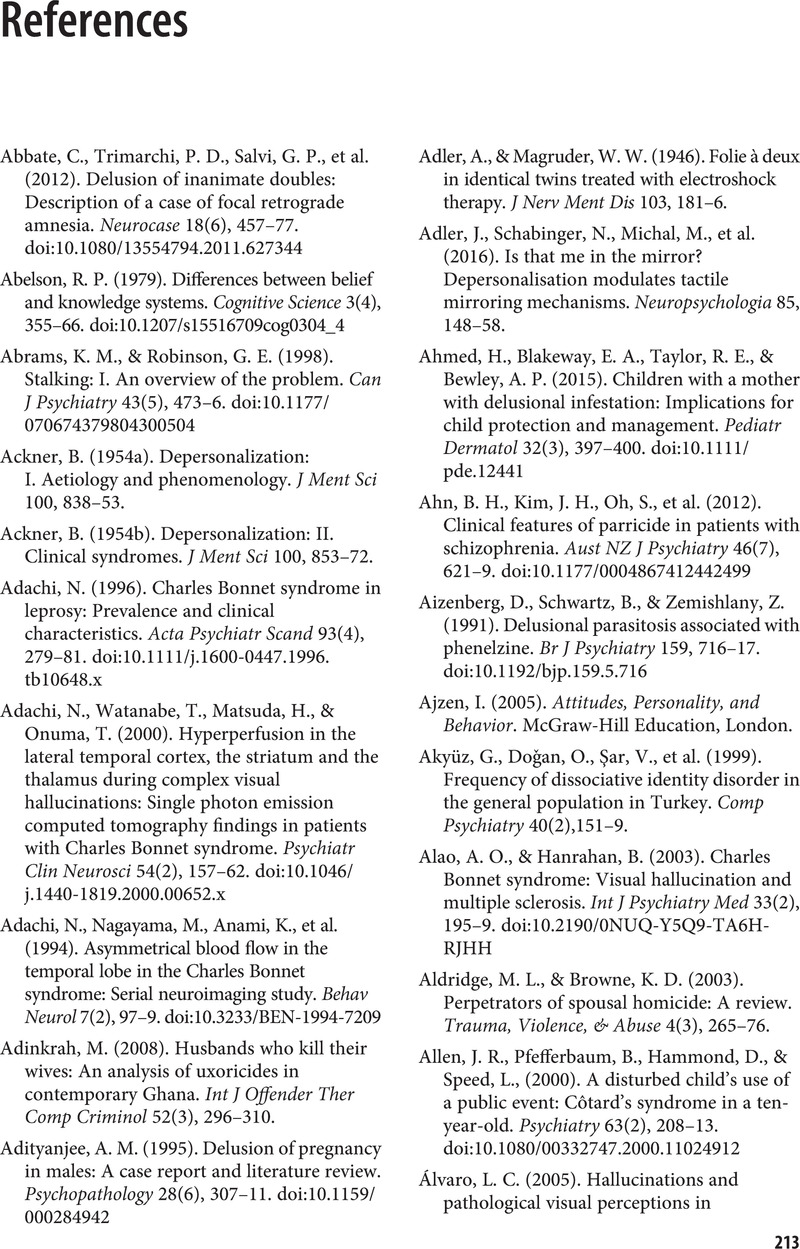Book contents
- Psychopathology of Rare and Unusual Syndromes
- Psychopathology of Rare and Unusual Syndromes
- Copyright page
- Contents
- Reviews
- Preface
- Section 1 Abnormalities of Belief and Judgement
- Section 2 Abnormalities of the Experience of Love
- Section 3 Abnormalities of Perception
- Section 4 Abnormalities of the Self
- Section 5 Abnormalities of Experience of the Body
- Section 6 Abnormalities of Memory Function
- Section 7 Abnormalities of Behaviour
- References
- Index
- References
References
Published online by Cambridge University Press: 26 August 2021
- Psychopathology of Rare and Unusual Syndromes
- Psychopathology of Rare and Unusual Syndromes
- Copyright page
- Contents
- Reviews
- Preface
- Section 1 Abnormalities of Belief and Judgement
- Section 2 Abnormalities of the Experience of Love
- Section 3 Abnormalities of Perception
- Section 4 Abnormalities of the Self
- Section 5 Abnormalities of Experience of the Body
- Section 6 Abnormalities of Memory Function
- Section 7 Abnormalities of Behaviour
- References
- Index
- References
Summary

- Type
- Chapter
- Information
- Psychopathology of Rare and Unusual Syndromes , pp. 213 - 253Publisher: Cambridge University PressPrint publication year: 2021



